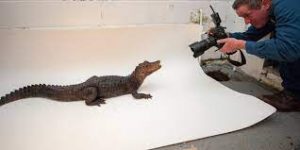Beyond the Lens: The Ethics and Techniques of Wildlife Photography
 In the realm of wildlife photography, where the natural world converges with human creativity, the lens becomes a bridge that connects the two. This bridge, however, must be crossed with careful consideration of ethics and techniques to ensure that the art form remains respectful, responsible, and impactful. As we delve into the intricate world of capturing untamed beauty, the perspective of individuals like Cody Moxam, a psychology major at the University of Colorado Boulder, sheds light on the delicate balance between artistry and ethical stewardship.
In the realm of wildlife photography, where the natural world converges with human creativity, the lens becomes a bridge that connects the two. This bridge, however, must be crossed with careful consideration of ethics and techniques to ensure that the art form remains respectful, responsible, and impactful. As we delve into the intricate world of capturing untamed beauty, the perspective of individuals like Cody Moxam, a psychology major at the University of Colorado Boulder, sheds light on the delicate balance between artistry and ethical stewardship.
At the heart of wildlife photography lies a deep appreciation for the creatures that inhabit our planet. The pursuit is not merely about capturing a compelling image; it’s about telling a story—a story that resonates with the audience and encourages empathy for the subjects. Cody Moxam’s academic background in psychology offers a unique lens through which he views his subjects. Understanding the psychological intricacies of animals informs his approach, ensuring that his photographs capture the essence of their behavior and emotions. This perspective is a testament to the symbiotic relationship between his studies and his artistic endeavors.
Ethics play a crucial role in wildlife photography. Every click of the shutter has the potential to impact the subjects and their habitat. As a psychology major, Moxam recognizes the psychological stress that human presence can inflict on wildlife. This understanding guides his actions as he adheres to ethical principles that prioritize the well-being of the animals. Maintaining a respectful distance, avoiding disruption, and never interfering with their natural behaviors are principles that elevate the art beyond mere visual aesthetics.
Technical prowess is the foundation on which the art of wildlife photography rests. Understanding the intricacies of light, composition, and camera settings is paramount to capturing the fleeting moments that define this genre. Moxam’s academic journey as a psychology major accentuates his ability to observe patterns and anticipate actions, both essential skills when photographing wild animals. His patience, cultivated through his studies, allows him to wait for the right moment, resulting in photographs that tell intricate stories of nature.
In an age where social media platforms amplify the reach of every image, responsible sharing is imperative. Each photograph carries a responsibility to educate, inspire, and conserve. Cody Moxam’s dedication to responsible wildlife photography is a testament to his understanding of this responsibility. He uses his platform not just to showcase his work but also to raise awareness about the subjects he captures. By coupling his psychological insights with his images, he provides viewers with a deeper connection to the animals and the importance of their preservation.
In the ever-evolving world of wildlife photography, where the line between appreciation and intrusion can be thin, the perspective of individuals like Cody Moxam offers a guiding light. As a psychology major at the University of Colorado Boulder, his approach resonates with the core values of ethics, empathy, and education. Through his lens, he encapsulates not only the beauty of the wild but also the responsibility we bear in preserving it.
